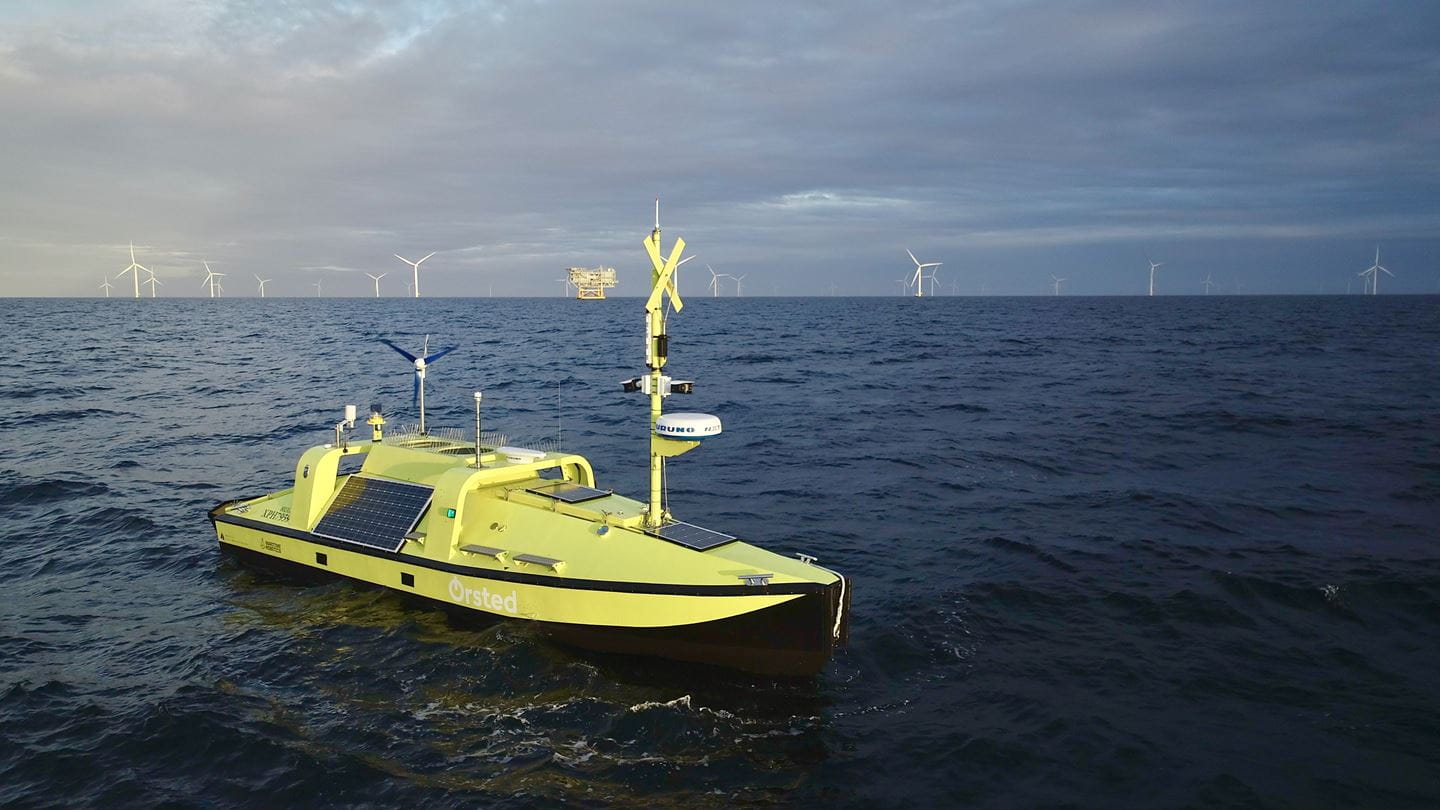
Offshore wind farm developer Ørsted has designed and developed the first uncrewed surface vessel (USV) in the offshore energy industry for offshore metocean measurement campaigns.
The prototype, dubbed ‘Hugin USV’, is designed for continuous operation in the harshest offshore conditions for up to a year at a time.
The USV has a built-in navigation system, which enables it to transit from shore at various degrees of autonomy, and it can be controlled both in line-of-sight or from a beyond-line-of-sight remote control centre.
What’s so special about our USV concept is that it can bring our measurement equipment to and from our offshore sites without the need for large, specialised support vessels.
The vessel is designed as a generic sensor platform and can collect large amounts of data on, among other things, the wind conditions, the state of the seabed, and biological and ecological measurements, all dependent on the sensor instrumentation chosen for a given operation.
This range of measurements the vessel takes is essential for the Danish multinational‘s early-phase development activities prior to the construction of new wind farms.
How well do you really know your competitors?
Access the most comprehensive Company Profiles on the market, powered by GlobalData. Save hours of research. Gain competitive edge.

Thank you!
Your download email will arrive shortly
Not ready to buy yet? Download a free sample
We are confident about the unique quality of our Company Profiles. However, we want you to make the most beneficial decision for your business, so we offer a free sample that you can download by submitting the below form
By GlobalData“What’s so special about our USV concept is that it can bring our measurement equipment to and from our offshore sites without the need for large, specialised support vessels,” said Frederik Søndergaard Hansen, programme manager and co-inventor of Hugin.
“While on site, it can operate autonomously for extended periods of time, measuring large amounts of data that can be sent onshore and processed in real-time.”
Ørsted says the new vessel design has “several advantages” over conventional solutions that rely on specialised support vessels, such as being safer due to removing the risk for offshore technicians; a significant reduction in the overall carbon emissions; and a longer operational window, as it can operate safely in high sea state conditions.
Development, testing, and future production of Ørsted’s uncrewed surface vessel
The design, development, construction, and testing of the prototype USV was conducted as part of Ørsted’s innovation programme in collaboration with selected industry partners.
The 9-metre-long prototype was constructed by the Danish shipbuilder Tuco Marine Group, and the USV control system was delivered by Norway’s Maritime Robotics.
The prototype Hugin USV was tested in Danish and Norwegian waters and has been operational during hurricane conditions, where it experienced waves up to nine metres high in the North Sea.
The vessel, propelled by a twin mercury 130hp engine, has achieved type validation as a floating LiDAR system by the internationally accredited Norwegian classification society ‘Det Norske Veritas’ (DNV), meaning it can be used for commercial operations related to wind farm development.
”The autonomous vessel is a very good example of Ørsted’s innovation methodology. First, we study the megatrends addressing our industry – in this case, the challenge of obtaining quality wind measurements and environmental data in the fastest time possible. Then, we apply our three-step demonstrator, stepstone, and commercial scale product-to-market recipe,” said Jacob Edmonds, head of innovation at Ørsted.
“We start small and proof the concept, then through strong partnership collaboration, financial backing, and against the tide of macroeconomic trends, we persevere through our extensive in-house project management experience and systematic problem-solving mindset.”
Ørsted, which has patented the USV concept, says it “sees enormous potential” in the technology and has initiated a serial production based on the prototype.
These new vessels will also be capable of deep-water operations for future floating wind farms.
The USVs in the new class will also be constructed in Denmark by Tuco Marine Group, with Maritime Robotics again handling the control systems.
Ørsted says it expects to produce five new USVs by the end of 2023.



